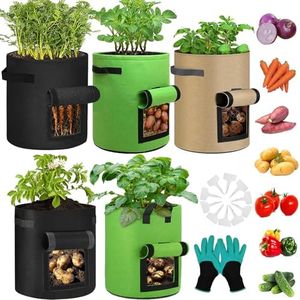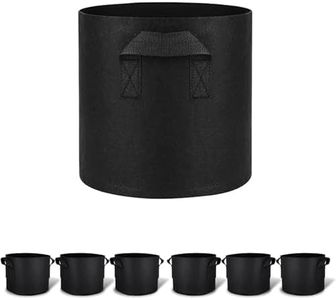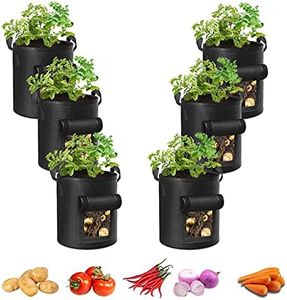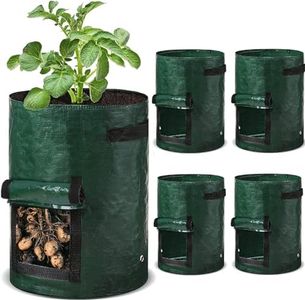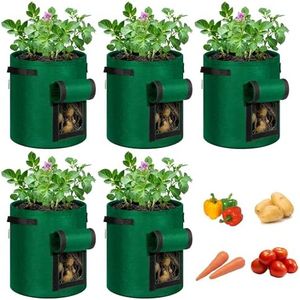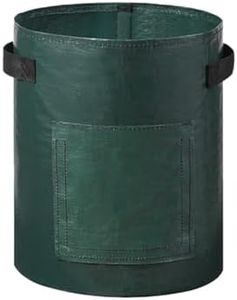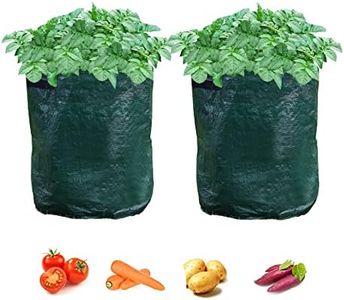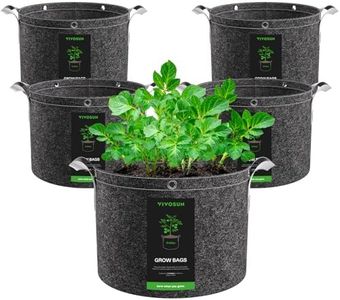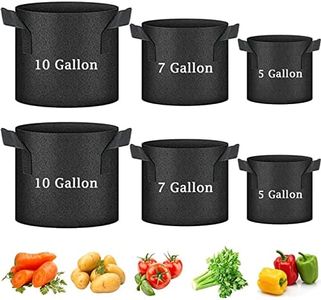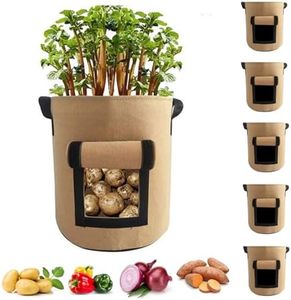We Use CookiesWe use cookies to enhance the security, performance,
functionality and for analytical and promotional activities. By continuing to browse this site you
are agreeing to our privacy policy
10 Best Potato Grow Bags
From leading brands and best sellers available on the web.Buying Guide for the Best Potato Grow Bags
Choosing the right potato grow bag can make home gardening easier and more productive, especially if you have limited space or soil quality issues. Grow bags offer good drainage and portability, making them ideal for balconies, gardens, patios, and lawns. Before buying, consider how much space you have, how many potatoes you want to grow, and whether you'll need to move the bags around. Picking the right bag helps you provide a healthy growing environment for your plants and enjoy a better harvest.Bag Size (Capacity in Gallons or Liters)Bag size refers to how much soil and space the grow bag provides for your plants. This is important because potato plants need enough room to develop strong roots and tubers. Smaller bags (7-10 gallons) are suitable for growing a few potato plants, while larger bags (15-20 gallons or more) can accommodate several plants and produce a bigger harvest. To decide on the right size, think about how many potatoes you want and the space available for the bags. If you’re just starting or have limited space, go for smaller bags. For larger families or serious gardening, bigger bags are better.
Bag MaterialThe material of the grow bag affects durability, breathability, and water drainage. Common materials include felt-like nonwoven fabric and heavy-duty plastic. Fabric bags are popular because they allow air pruning (helping roots grow strong), keep soil from becoming waterlogged, and are easy to move. Plastic bags are more affordable and retain moisture better but may not provide as much air flow. If you want easy maintenance and healthier roots, fabric is the way to go. If you need something that holds water longer in hot climates, consider plastic.
HandlesHandles make moving bags much easier, especially when filled with soil and plants. Not all bags have reinforced handles, so this feature is important if you want to relocate your potato plants or bring them indoors during bad weather. If you plan to keep bags in one spot, this may not matter as much, but for flexibility, choose bags with strong, stitched handles.
DrainageDrainage refers to the grow bag’s ability to let excess water escape, preventing soggy soil that can rot potatoes. Good drainage is a major advantage of fabric bags, which often have naturally porous sides, while some plastic bags come with drilled holes. Make sure your bag has drainage features so the plant roots remain healthy. If you live in a rainy area, prioritize bags with better drainage.
Access Flap or WindowSome potato grow bags feature a flap or window that allows you to check on your potatoes and harvest them without dumping out all the soil. This is a convenience feature that makes harvesting easier and less messy, but isn’t essential for growing. If you want to check tuber progress or harvest continually, pick a bag with this feature. If you prefer a simpler design and don’t mind emptying the bag at harvest, a basic model will work.
Reusability and CleaningReusability relates to how well the bag can be cleaned and reused in future seasons. Some bags are designed for single use, while others can be washed and stored for next year's planting. Look for bags that advertise being washable and made from tough, UV-resistant materials if you want more value and less waste. If you only plan one season of planting, this might not be as important.



